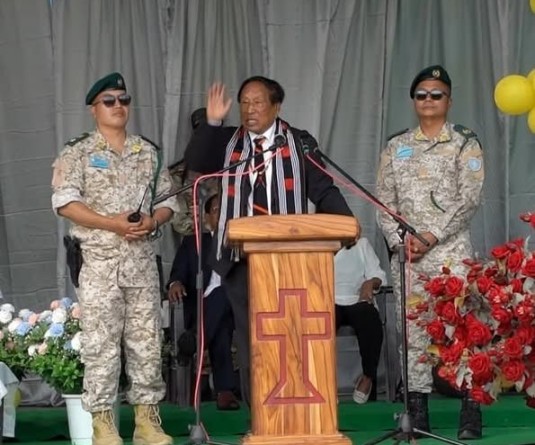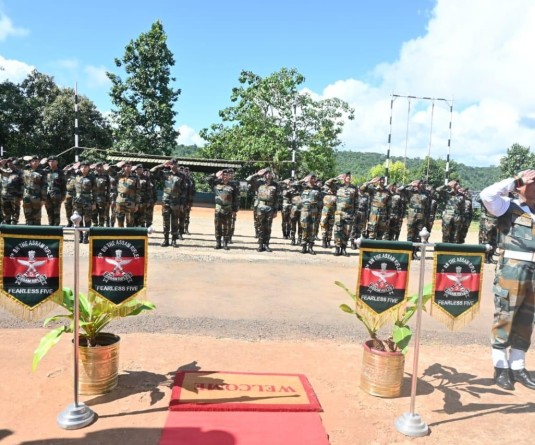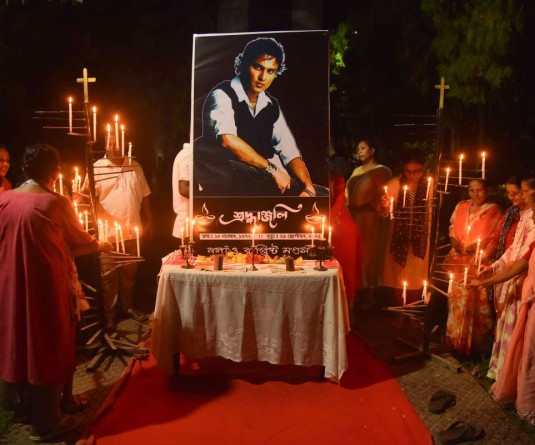
Kohima | August 5 : The total population of Nagaland stood 1, 980, 602 as per the Provisional Population Totals of Census 2011. Out of this, rural population stands at 1, 406, 861 and urban population 573,741.
Dimapur district has the highest urban population of 197,277 (34.38% of the total urban population of the state) whereas Mon district has the largest rural population of 215953 (15.35%) of the total rural population of the state). The lowest rural (42, 984) and urban (7, 609) population are both recorded in Longleng district which comes to 3.06% and 1.33% respectively of total rural and urban population of the state.
This was stated in the summary of Provisional Population Totals Paper 2 (Volume 1), rural- urban distribution, Nagaland series 14, released here today by minister for urban development and higher & technical education Dr. Shurhozelie Liezietsu
The rural population constitute 71.03% of the total population and urban population 28.97%. In 2001, the urban population was only 17.23% of the total population and the rural population recorded at 82.77%. In 2011, Dimapur district with 51.95% urban population has the highest proportion of urban population among the districts in the state. On the other hand, Mon district has the highest proportion of rural population (86.15%).
The sex ratio in Nagaland has shown a 31 points increase in 2011 compared to that of 2001 i.e from 900 in 2001 to 931 in 2011. The sex ratio in urban areas in 2011 stands at 905 and that of rural areas 942. Kohima district has the highest urban se x ratio (932) whereas Zunheboto tops the list among the districts in rural sex ratio at 998.
Referring to child population ratio (06 years), the report said in 2011 census 285,981 children have been recorded in the age group of 0-6. Out of which 214, 138 are in rural areas and 71,843 in urban areas. The state has observed a decline in the percentage of child population by 0.12% in the last decade.
The child sex ratio in the age group of 0-6 has shown a 20 points drop from 2001 level. Interestingly, the child sex ratio of 979 recorded in urban areas of Nagaland, which is 40 points higher than 2001, is also the highest urban sex ratio in the country. In 2011, the child sex ratio in the age group 0-6 in rural areas has been recorded at 932 which is 37 point lower than that of 2001 figure (969). Despite the overall decline in the child sex ratio, three districts in the state viz Zunheboto, Peren and Kohima has recorded impressive urban child sex ratio of 1038, 1016 and 1000 respectively.
As per the provisional population totals of census 2011, the number of literates in Nagaland are 1, 357, 579. Of this, 904, 799 literates are in rural areas and 452, 780 literates in urban areas.
Out of an increase of 225, 256 literates over the decade 2001-2011, rural areas accounted for 21, 873 literates and urban areas 203, 383 literates.
The highest number of both rural literates (129, 370) and urban literates (152,718) has been recorded in Dimapur district.
The literacy rate of Nagaland as per the provisional population totals of census 2011 is 80.11%, a considerable jump from the 66.59% recorded in 2001 census. The literacy rate in rural areas in 2011 stands at 75.86 % whereas in urban areas it is 90.21%. Wokha district (96.47%) ranks first in the urban areas whereas Mokokchung (92.01) ranks first in rural areas.
As in 2001, the male literacy rate (83.29%) continues to be higher than that of females (76.69%). In 2011 however, the gap between the male and female literacy rates in Nagaland (6.60 points) is not as wide as at the national level (16.68 points). Among the districts Mokokchung has recorded the lowest gap between the male and female literacy rate at 1.81 points.
Dimapur district has the highest urban population of 197,277 (34.38% of the total urban population of the state) whereas Mon district has the largest rural population of 215953 (15.35%) of the total rural population of the state). The lowest rural (42, 984) and urban (7, 609) population are both recorded in Longleng district which comes to 3.06% and 1.33% respectively of total rural and urban population of the state.
This was stated in the summary of Provisional Population Totals Paper 2 (Volume 1), rural- urban distribution, Nagaland series 14, released here today by minister for urban development and higher & technical education Dr. Shurhozelie Liezietsu
The rural population constitute 71.03% of the total population and urban population 28.97%. In 2001, the urban population was only 17.23% of the total population and the rural population recorded at 82.77%. In 2011, Dimapur district with 51.95% urban population has the highest proportion of urban population among the districts in the state. On the other hand, Mon district has the highest proportion of rural population (86.15%).
The sex ratio in Nagaland has shown a 31 points increase in 2011 compared to that of 2001 i.e from 900 in 2001 to 931 in 2011. The sex ratio in urban areas in 2011 stands at 905 and that of rural areas 942. Kohima district has the highest urban se x ratio (932) whereas Zunheboto tops the list among the districts in rural sex ratio at 998.
Referring to child population ratio (06 years), the report said in 2011 census 285,981 children have been recorded in the age group of 0-6. Out of which 214, 138 are in rural areas and 71,843 in urban areas. The state has observed a decline in the percentage of child population by 0.12% in the last decade.
The child sex ratio in the age group of 0-6 has shown a 20 points drop from 2001 level. Interestingly, the child sex ratio of 979 recorded in urban areas of Nagaland, which is 40 points higher than 2001, is also the highest urban sex ratio in the country. In 2011, the child sex ratio in the age group 0-6 in rural areas has been recorded at 932 which is 37 point lower than that of 2001 figure (969). Despite the overall decline in the child sex ratio, three districts in the state viz Zunheboto, Peren and Kohima has recorded impressive urban child sex ratio of 1038, 1016 and 1000 respectively.
As per the provisional population totals of census 2011, the number of literates in Nagaland are 1, 357, 579. Of this, 904, 799 literates are in rural areas and 452, 780 literates in urban areas.
Out of an increase of 225, 256 literates over the decade 2001-2011, rural areas accounted for 21, 873 literates and urban areas 203, 383 literates.
The highest number of both rural literates (129, 370) and urban literates (152,718) has been recorded in Dimapur district.
The literacy rate of Nagaland as per the provisional population totals of census 2011 is 80.11%, a considerable jump from the 66.59% recorded in 2001 census. The literacy rate in rural areas in 2011 stands at 75.86 % whereas in urban areas it is 90.21%. Wokha district (96.47%) ranks first in the urban areas whereas Mokokchung (92.01) ranks first in rural areas.
As in 2001, the male literacy rate (83.29%) continues to be higher than that of females (76.69%). In 2011 however, the gap between the male and female literacy rates in Nagaland (6.60 points) is not as wide as at the national level (16.68 points). Among the districts Mokokchung has recorded the lowest gap between the male and female literacy rate at 1.81 points.






